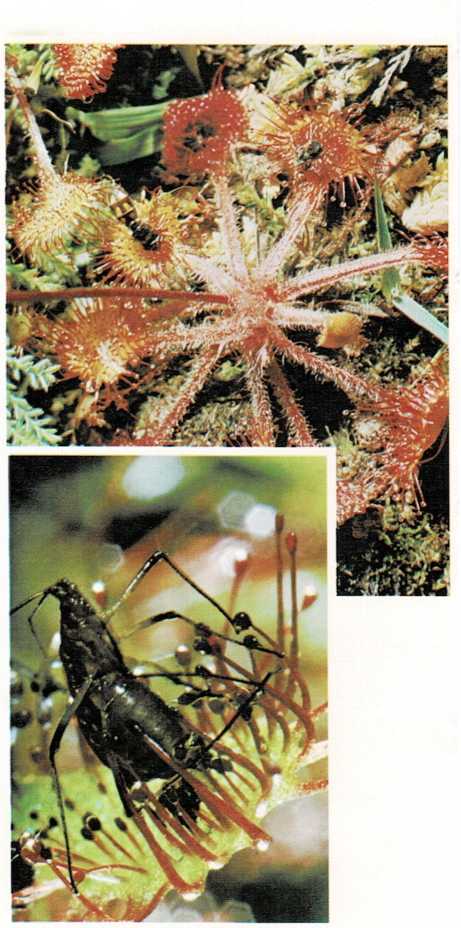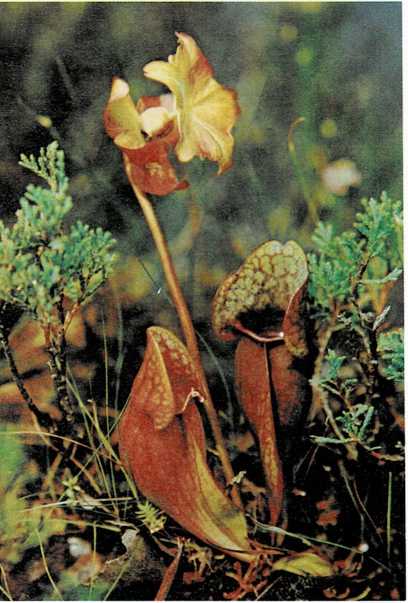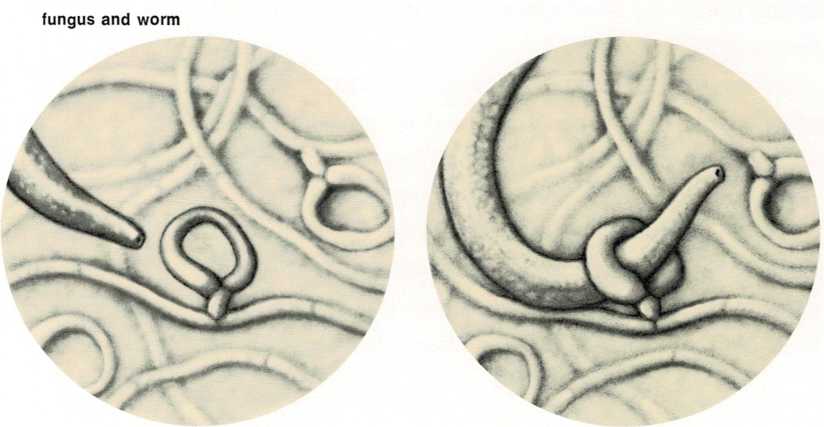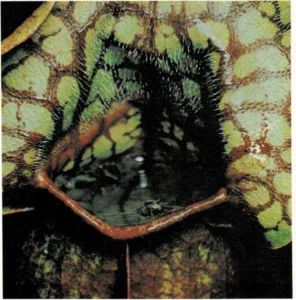Plants that trap insects
In many wet and swampy places there are plants that trap insects! But
plants don’t “eat.” If plants don’t “eat,” then why do they catch
insects?
All plants need a salt called a nitrate. It helps them grow. Most plants
get this salt from the ground, but there isn’t much of it in swamps. So
some plants trap and digest insects to get the salt they need.
Plants that trap insects have different ways of catching them. The plant
called a sundew has leaves that are covered with little hairs. On each
hair there is a drop of sticky liquid. The sun sparkles on these drops
and attracts insects. But when an insect touches one of the drops, it is
stuck fast! Then, all the hairs around the insect bend over slowly. They
push the insect down against the leaf. A juice oozes out of the leaf and
slowly digests the insect!
The plant called a Venus’s-flytrap works just like a trap. There are
little hairs, like triggers, on each leaf. Around the edge of the leaf
are little “claws.” And each leaf can fold itself in half! When a fly or
other insect lands on a leaf and touches one of the hair triggers, the
leaf quickly folds in half. The little “claws” lock together and the
insect is trapped. Then the plant digests it.

sundew
An aphid has been caught by the sticky hairs of the sundew plant.

Venus’s-flytrap
(left) The open leaves of the Venus’s-flytrap are ready to catch
insects, (top) A fly lands on a leaf, touching a hair trigger, (above)
The leaf closes, trapping an insect. Now the plant will slowly digest
it.

pitcher plant
The butterwort traps insects much the same way the sundew does. The
butterwort’s leaves are sticky. When an insect crawls on a leaf, it gets
stuck. Then the edges of the leaf curl in. The insect is pushed to the
middle of the leaf, where juice oozes out and digests it.
The pitcher plant drowns insects! Its leaves are shaped like vases. They
are usually half-filled with rain water. Inside the leaves are little
pockets filled with a sweet-smelling juice. An insect crawls into a leaf
to get at the juice. But the sides of the plant are slippery and covered
with hairs that point downward. The
A fly has fallen into the pitcher plant’s leaf. The leaf is like a vase
filled with water. The fly will drown and the plant will digest it.

insect slides down the hairs and falls into the water. It drowns and is
digested.
There is even a plant that catches worms! It catches them with a lasso,
just as a cowboy catches a cow!
This plant is a fungus. It grows under the ground and is so small it can
be seen only with a microscope. It spreads through the ground like many
tiny threads. There are many loops in these threads.
Tiny worms, no bigger than the threads, crawl through the soil. When a
worm crawls through a loop, the loop suddenly tightens! The worm is
caught! Then the fungus digests it.
A tiny worm crawls among the threads of a fungus. There are loops in
the threads.The worm crawls through a loop. Suddenly the loop tightens and the
worm is caught!


